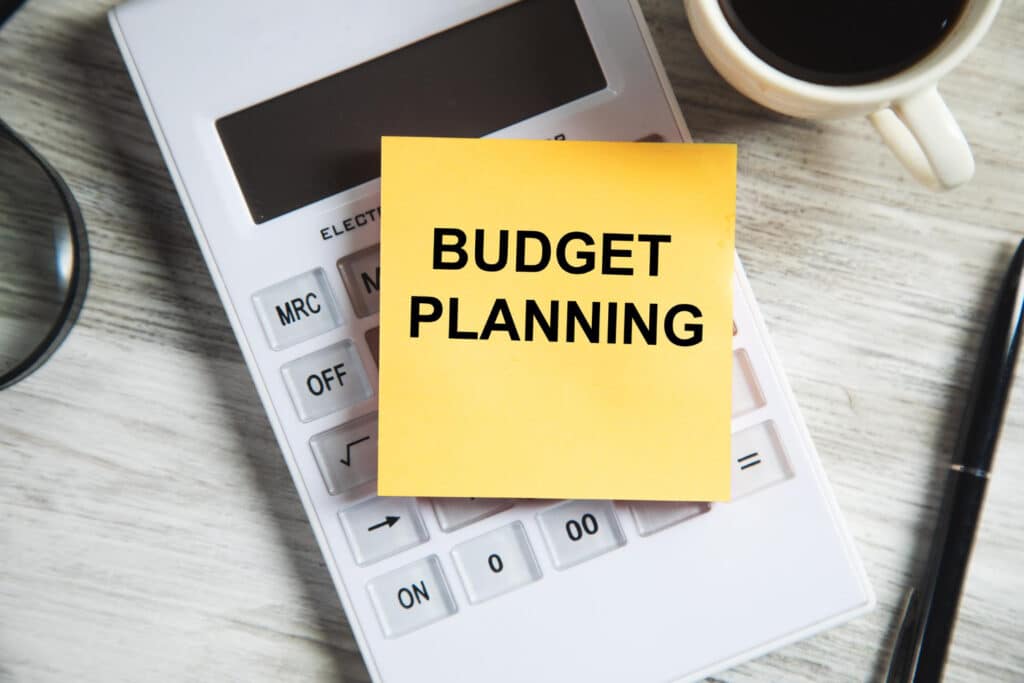
In today’s dynamic business world, honing the skills of business planning and budgeting stands as a pivotal factor for attaining innovation and triumph. These strategic tools not only allow organizations to streamline resources but also pave the way for informed decision-making by setting clear goals within a flexible framework.
Comprehending the fundamental elements of a business plan and implementing a robust budgeting process empowers entrepreneurs and managers to adeptly navigate financial uncertainties, capitalize on prospects, and propel their enterprises toward expansion and profitability.
This article delves into the significance of business planning and budgeting, furnishing practical insights to empower professionals in excelling within these critical domains.
Key Takeaways
- Business planning and budgeting are essential for understanding business goals, improving future performance, and avoiding financial risks.
- The components of a business plan include an executive summary, market analysis, financial plan, marketing and sales plans, milestones and metrics, and a description of the management team.
- The business planning cycle involves evaluating current performance, identifying opportunities and threats, setting goals, creating a budget, regularly reviewing and making changes to the plan, and repeating the cycle periodically.
- Steps to create a budget include evaluating sources of income, listing fixed and variable expenses, accounting for one-time expenses, and determining the available portion for investment or savings.
Importance of Business Planning and Budgeting
Business planning and budgeting are essential for any business’s success. They provide a roadmap and financial framework for achieving goals and ensuring profitability.
The benefits of business planning include a better understanding of business goals and development, setting targets and evaluating success, and providing tools for improving the business in the future.
On the other hand, budgeting advantages include avoiding financial risks and seizing opportunities, ensuring profitability and the ability to invest in future projects, and allowing for smarter decision-making and resource allocation.
Business planning and budgeting make the business management process easier. They allow for the evaluation of business effectiveness through income increase and goal achievement, and predicting potential business downfalls and minimizing risks.
Is MAUS Software worth considering for your Business/Financial planning ?- Read Here
Components of Business Planning
One important aspect to consider when it comes to business planning and budgeting is the inclusion of various components that help create a comprehensive and effective strategy.
These components include an executive summary and a financial plan.
The executive summary provides a high-level overview of the business plan, highlighting key objectives and strategies. It serves as a concise summary of the entire plan and is often the first section that investors and stakeholders read.
The financial plan, on the other hand, outlines the financial projections and goals of the business. It includes details on revenue forecasts, expenses, and cash flow projections. The financial plan helps to assess the financial viability of the business and guides decision-making regarding investments and resource allocation.
Business Planning Cycle
To effectively navigate the process of business planning and budgeting, it is essential to follow a well-defined business planning cycle. This cycle involves evaluating the business’s current performance compared to previous years or targets, identifying opportunities and threats, and analyzing successes and failures from the previous year.
Once these evaluations are complete, the next step is to set main business goals and incorporate them into the annual plan. Creating a budget and budget targets is a crucial part of the cycle, as it helps in predicting potential downfalls and minimizing risks.
Regularly reviewing and making changes to the plan is necessary to ensure its effectiveness.
What is Budgeting in Business Planning?
Budgeting within business planning entails the strategic allocation of financial resources to various facets of an organization, aiming to achieve predefined objectives. It involves forecasting income and expenses over a specific period, typically annually, outlining a roadmap that guides financial decision-making.
For instance, in a retail setting, budgeting might involve allocating funds for marketing campaigns, inventory management, employee wages, and operational expenses. By setting specific monetary limits for each area, the company ensures it stays within financial boundaries while striving to achieve sales targets or expansion goals.
Moreover, budgeting facilitates the identification of potential bottlenecks or areas needing improvement. For instance, a software company crafting its annual budget might allocate a substantial portion to research and development to create innovative products.
However, if the budget reveals limited funds for marketing, the company might struggle to reach its target audience despite a superior product. Such insights gleaned from the budgeting process enable proactive adjustments, ensuring a more balanced and effective allocation of resources to drive overall business success.
Steps to Create a Budget
When creating a budget, it is important to carefully evaluate sources of income and expenses to understand available funds and accurately allocate resources.
Here is breakdown of steps with examples for better overview-
1. Evaluate Income Sources:
Example: A freelance designer assesses income sources like client projects, online sales of digital products, and occasional workshops. They evaluate the regularity and reliability of these income streams to establish a baseline for budgeting.
2. Identify Fixed Expenses:
Example: A small restaurant outlines fixed expenses like rent, utilities, and payroll. These expenses remain constant month-to-month, allowing the business to accurately predict and allocate funds.
3. Calculate Remaining Funds:
Example: After subtracting fixed expenses from the total income, a marketing agency identifies the surplus funds available for variable expenses like advertising campaigns, which can fluctuate monthly.
4. Consider Variable Expenses:
Example: A retail store accounts for variable costs such as inventory purchases or sales commissions. These costs vary depending on factors like seasonal demands or market trends, requiring flexible budgeting.
5. Predict One-Time Expenses:
Example: A tech startup anticipates one-time expenses like equipment upgrades or software licenses. By factoring these into the budget, they ensure they’re prepared for unexpected but essential costs.
6. Financial Situation Analysis:
Example: A manufacturing company analyzes its budget to understand its financial health. By comparing income against fixed, variable, and one-time expenses, they gain a clear picture of their resources for potential expansion or investments.
7. Informed Resource Allocation:
Example: A non-profit organization uses its comprehensive budget to allocate funds for different programs or initiatives. By understanding their financial situation, they make informed decisions on where to direct resources for maximum impact.
Importance and implementation of Business Plan- Read Here
Tips for Budgeting in Business Planning
To effectively manage finances and ensure long-term success, businesses can incorporate the following tips into their budgeting process.
Firstly, incorporating feedback from various stakeholders can provide valuable insights and help improve the accuracy of the budget.
Secondly, analyzing variances between budgeted and actual expenses can help identify areas of improvement and adjust future budget allocations accordingly.
Additionally, forecasting future expenses based on historical data and market trends can help businesses plan for potential growth and allocate resources accordingly.
Finally, utilizing budgeting software can streamline the budgeting process, improve accuracy, and provide real-time insights into financial performance.
Regular Review of the Budget
Regularly reassessing and scrutinizing the budget is essential for maintaining financial stability and optimizing resource allocation in business planning and budgeting.
A regular review of the budget offers several benefits. Firstly, it allows businesses to identify any deviations from the original plan and make necessary adjustments to ensure financial goals are met. Additionally, it provides an opportunity to evaluate the effectiveness of the budget and make strategic decisions regarding resource allocation.
To conduct an effective budget review, businesses can employ several strategies. These include comparing actual income and expenses with the predicted budget, analyzing any deviations, and identifying the reasons behind them. It is also important to involve key stakeholders in the review process and encourage their input and suggestions.
Regular budget reviews enable businesses to maintain accuracy, stability, and adaptability in their financial planning, ultimately driving innovation and success.
Involving Employees in the Budget Process
Incorporating employee participation is crucial for fostering collaboration and optimizing resource allocation in the budgeting process. Employee engagement in budgeting not only enhances transparency but also brings diverse perspectives and innovative ideas to the table.
Collaborative budgeting allows employees to have a sense of ownership and accountability, leading to a more motivated workforce. When employees are involved in the budget creation process, they gain a deeper understanding of the company’s financial goals and the impact of their own department’s decisions on the overall budget.
This involvement also promotes a culture of financial responsibility and encourages employees to find creative ways to maximize resources and achieve budget targets. By involving employees in the budget process, organizations can tap into their collective knowledge and expertise, driving innovation and ultimately improving business outcomes.
Visualizing Data for Easy Tracking
One effective way to easily track data in business planning and budgeting is by regularly visualizing the information using charts and diagrams.
Data visualization techniques allow businesses to analyze and interpret complex data sets, making it easier to identify trends, patterns, and areas of improvement.
By visually representing financial data and key performance indicators, businesses can track their financial growth and make informed decisions.
Charts and diagrams provide a clear and concise overview of the data, allowing for quick and easy identification of outliers or discrepancies.
This visual representation also helps in presenting the information to stakeholders in a more engaging and understandable manner.
Budgeting for Different Business Sizes
When budgeting for different business sizes, it is important to tailor the budget plan to the specific needs and resources of each organization. This ensures that the budget is realistic and aligned with the goals and capabilities of the business. Startups, for example, may have limited financial resources and need to allocate their budget wisely to achieve growth and sustainability.
Non-profit organizations, on the other hand, may rely heavily on grants and donations, requiring a budget that demonstrates transparency and accountability.
| Business Size | Budgeting Focus | Key Considerations |
| Startups | Growth and sustainability | Limited resources, cost optimization |
| Small Size Businesses | Stability and profitability | Cash flow management, expense control |
| Medium Size Businesses | Expansion and market penetration | Resource allocation, revenue growth |
| Large Corporations | Efficiency and strategic investments | Departmental budgets, ROI analysis |
| Non-profit Organizations | Transparency and accountability | Grant management, donor reporting |
Concluding Remarks
In conclusion, mastering the art of business planning and budgeting is essential for the success of any organization.
By developing a comprehensive business plan and creating an effective budget, businesses can set clear objectives, allocate resources wisely, and make informed decisions.
Regular review of the budget, involving employees in the process, and visualizing data for easy tracking are important strategies to ensure the effectiveness of the budgeting process. With these skills, entrepreneurs and managers can drive their businesses towards long-term profitability and success.
Want VAs for your daily operation, budgeting, planning and bookkeeping- Explore Peachtree VA
Frequently Asked Questions (FAQ)
What Are Some Common Challenges or Obstacles That Businesses Face When Creating a Budget?
Common challenges when creating a budget include accurately predicting income and expenses, dealing with unexpected costs, aligning budget with business goals, and obtaining buy-in from stakeholders. Overcoming these obstacles requires careful planning, flexibility, and effective communication.
How Can Businesses Ensure That Their Budget Is Flexible Enough to Accommodate Unexpected Expenses or Changes in the Market?
Businesses can ensure budget flexibility by regularly reviewing and adjusting their budget plans. By staying informed about market changes, they can make timely adjustments to accommodate unexpected expenses and ensure financial stability.
Are There Any Specific Tools or Software That Businesses Can Use to Facilitate the Budgeting Process?
There are several budgeting software and tools available for businesses to facilitate the budgeting process. These tools and software help streamline financial planning, track expenses, and analyze data, providing businesses with accurate and efficient budgeting solutions.
How Can Businesses Effectively Track and Monitor Their Budget Throughout the Year?
Businesses can effectively track and monitor their budget throughout the year by regularly reviewing and comparing actual income and expenses against the budget, analyzing any deviations, and making necessary adjustments to ensure accuracy and financial stability.
What Are Some Strategies That Businesses Can Implement to Reduce Costs and Maximize Profitability Within Their Budget?
Implementing cost reduction strategies and profit maximization techniques can help businesses reduce expenses and increase profitability within their budget. This can include streamlining operations, negotiating better supplier deals, optimizing pricing strategies, and implementing efficient resource allocation.








